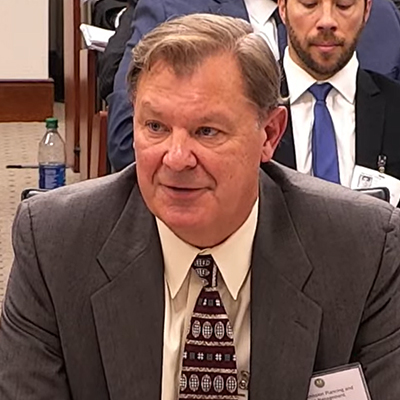Supply chain delays have hindered Pacific Gas and Electric’s progress replacing aged infrastructure, increasing the risk of equipment failure and wildfires, according to the independent monitor hired to keep tabs on the utility’s fire-prevention efforts.
The global pandemic’s supply chain slowdowns have hit U.S. electric utilities such as PG&E with “lengthened lead-times associated with ordering and receiving various goods,” Denver-based Filsinger Energy Partners said in its first report on the utility, issued Monday. “For example, due to the effects of global supply chain issues, lead times for certain transformers have increased from 38 weeks to approximately 38 months.”
That’s a problem because much of PG&E’s equipment has outlived its useful lifespan, it said.
Across the utility’s transmission, distribution and gas divisions, Filsinger, the independent system monitor (ISM), “has observed numerous PG&E asset ages that are significantly older than the related industry average useful life and the related PG&E average age of asset failure.”
“For example, PG&E reported having certain [substation] equipment with an average age of 60 years and an average industry service life of 40 years (i.e., 20 years older than the industry average),” it said. “Further, PG&E reported an average age of failure for this equipment as 70 years with 47% of this equipment exceeding this average age of failure.”
Two other types of assets have exceeded average service lives and industry standards by years or decades, it said.
“If only utilizing asset age to determine an asset’s useful life, PG&E would have to purchase and install over 2,000 components of the aforementioned equipment in order to bring the asset age of the equipment in these three categories down to the PG&E average age of failure for each equipment type,” it said. “A significantly higher investment would be required to get each asset category reduced to the industry average.”
Global supply chain problems, however, are delaying the utility’s equipment replacement programs.
“The emerging risk relates to the volume of assets that have the potential to fail within close time proximity to one another,” the report said.
The ISM
The California Public Utilities Commission required PG&E to pay for an ISM as a condition of approving its bankruptcy reorganization plan in May 2020. The CPUC selected Filsinger, which started work after PG&E exited probation and the oversight of a federal monitor in January. (See PG&E Ends Probation as a ‘Menace to California,’ Judge Says.)
Filsinger is expected to file reports every six months under its five-year contract. Its first report broadly cataloged the problems and progress of PG&E in trying to prevent its transmission and distribution systems from igniting more wildfires.
Catastrophic blazes blamed on PG&E equipment failures included the 2018 Camp Fire, the state’s deadliest and most destructive wildfire that began when a century-old C hook broke on a high-voltage line, causing the jumper conductor to fall onto the steel tower. The resulting electric arcs rained molten steel and aluminum, which sparked the grass and brush below.
The fire destroyed the town of Paradise in hours, killed 84 people and led to PG&E’s January 2019 bankruptcy filing and its guilty pleas in June 2020 to 84 counts of involuntary manslaughter.
State fire investigators have found that PG&E equipment caused massive and highly destructive fires in 2017, 2019, 2020 and 2021. The utility is now under investigation by the U.S. Forest Service for its possible role in igniting the Mosquito Fire, which started Sept. 6 and burned through 77,000 acres of forestland in the Sierra Nevada foothills east of Sacramento.
“The USFS has indicated to Pacific Gas and Electric [in] an initial assessment that the fire started in the area of the utility’s power line on National Forest System lands and that the USFS is performing a criminal investigation into the 2022 Mosquito fire,” PG&E told the Securities and Exchange Commission Sept. 26. Two days earlier, “the USFS [had] removed and took possession of one of the utility’s transmission poles and attached equipment,” it said.
The utility has made progress in some areas, the monitor’s report said, including its use of “enhanced powerline safety settings,” which increase fault-detection sensitivity and quickly de-energize lines that experience problems such as changes in current. The EPSS protocol also disables the automatic reclosing of circuit breakers.
PG&E said the expansion of EPSS in high-risk fire areas has greatly reduced potential ignitions from lines contacting trees and other fire dangers.
“From the implementation of EPSS in late July 2021 through October 2021, PG&E reports a 40% reduction in ignitions as compared to the past three-year average, and an 80% reduction in the CPUC-reportable ignitions as compared to the past three-year average for the same period,” the report noted.
The downside is that use of EPSS and the intentional blackouts known as public safety power shutoffs have significantly increased the number of outages and affected customers in high-threat fire areas, it said.
In a statement Monday, PG&E said “we welcome the oversight provided by the Independent Safety Monitor team. We agreed to this structure when we emerged from Chapter 11 in 2020, believing it would bring additional transparency to our critical safety work.”
The utility’s revamped “leadership team has intensified its focus on fostering an environment that encourages coworkers to raise concerns on any topic, especially around safety and risk, so that we can address things that need to be fixed or made safe,” it said. “The monitor team helps to build upon this culture and brings an enhanced level of openness and transparency to our efforts to provide safe and reliable energy in the face of evolving climate and wildfire risk.”
The company repeated its intent to underground 10,000 miles of power lines in regions at greatest risk of wildfires. The CPUC’s approval of that effort and billions of dollars in ratepayer funding remain uncertain, however.





